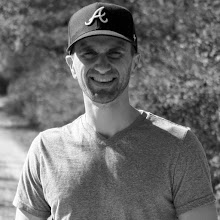In the early 1950s, several young men by the names of Roger Banister, John Landy, and Wes Santee were knocking on the door of the 4 minute mile barrier. Some said it would never be done and that the human body was simply not made to run that fast. The Perfect Mile is the story of each of these mens' quests for the 4:00 mile barrier.
Bannister was a medical student in London at the time and mixed training with studying, rounds at the hospital and keeping up with a social life. His scientific research into the capabilities of the human body aided his understanding of the practical side of running and he knew that it was definitely possible to break the barrier.
Landy was a student as well and spent countless hours training when friends and family were pursuing other activities. Of the three, he was probably the most well trained and could consistently run 4:02 miles and not be overly spent shortly thereafter.
Santee was a student at the University of Kansas and had team commitments to fulfill in addition to his individual pursuit of the 4 minute mile. His team obligations sometimes put a damper on the ability to focus solely on training for the event.
Each of the men kept track of the other's progress on far away continents and spurred him on to be the first to break the barrier. Eventually, Bannister succeeded in running a sub 4 minute mile at Oxford University with the help of a couple of training partners pacing him through the first 3.5 laps. Landy and Santee were obviously a bit disappointed but continued in their own personal pursuits.
After the barrier fell, Bannister and Landy finally met in the Commonwealth Games held in Canada in an epic race hyped in the media as one of the biggest races of all time. Thousands and thousands of people witnessed the race with Bannister just barely beating Landy at the end.
I was interested to read about the training methods at the time. There is a much greater understanding of how to train for speed in the approximately 60 years since that time. Another factor differentiating that period of competitive running with today is that virtually all world class athletes were not professional and had to subsist on the support of family and their own jobs rather than benefiting from the lucrative sponsorships afforded to today's athletes.
I thought the portion about the showdown between Bannister and Landy was well done but could have gotten to the point a bit quicker rather than prolonging the suspense. At parts, this portion felt like the suspense leading up to the race was unnecessarily lengthened.
The book is well written and adds suspenseful elements that keep you wanting to read more. It alternates amongst the three runners stories, constantly circling back to the 4 minute mile barrier. Bascomb did extensive research and interviews in writing the book and the quality of the material shows this. It would make an excellent movie if ever produced into a full length feature film. I definitely recommend the book for anyone interested in running, history, and the intrigue of running a mile in 4 minutes.
If this review was helpful, please let Amazon know at this link.
Saturday, November 13, 2010
Subscribe to:
Post Comments (Atom)


No comments:
Post a Comment